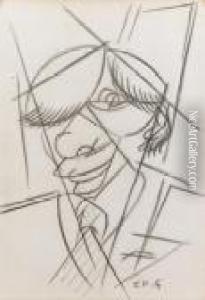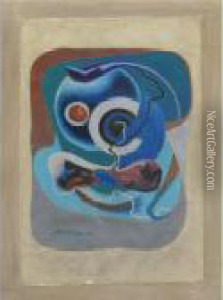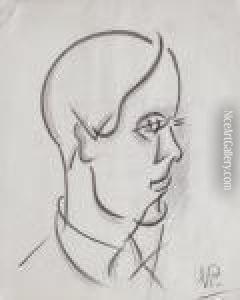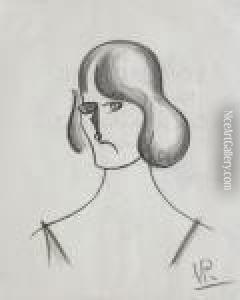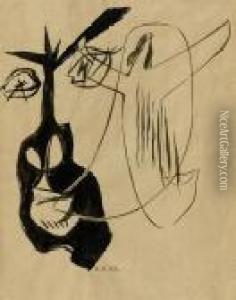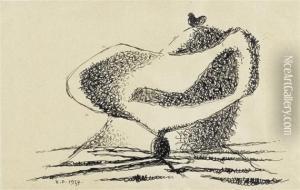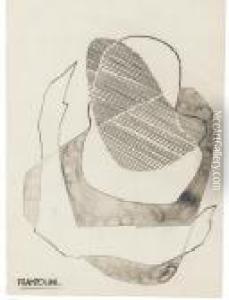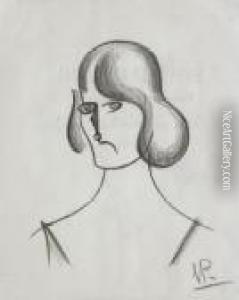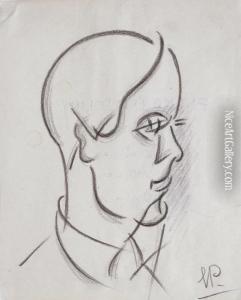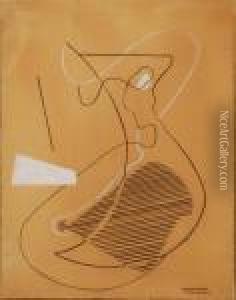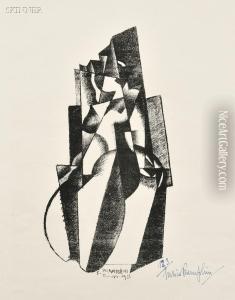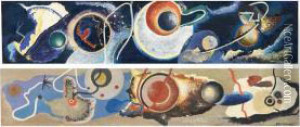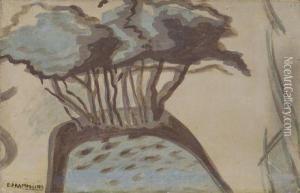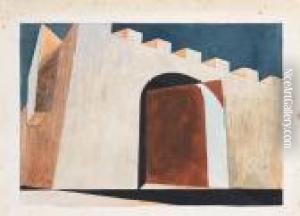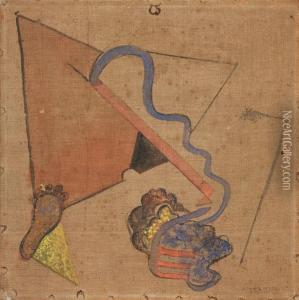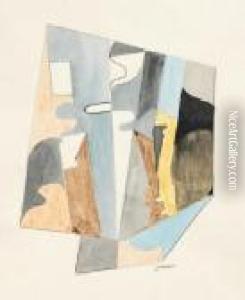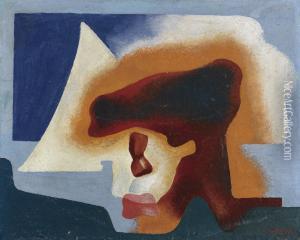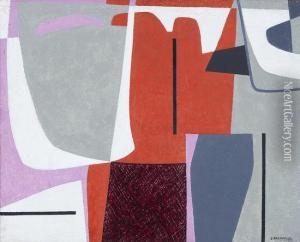Enrico Prampolini Paintings
Enrico Prampolini was an Italian Futurist painter, sculptor and stage designer who was born on April 20, 1894, in Modena, Italy. He was a prominent figure in the avant-garde movement in Europe during the early 20th century. Prampolini was initially influenced by the works of Umberto Boccioni and other Futurist artists, who sought to capture the dynamic energy of modern life and emphasized themes such as speed, technology, and industrial progress.
Prampolini joined the Futurist movement in 1913 and quickly became one of its most devoted and innovative exponents. He signed the 'Futurist Manifesto of Aerial Architecture' with architect Antonio Sant'Elia and contributed to developing the movement's ideas in various art forms, including painting, sculpture, and theater design. Prampolini's work was characterized by a strong use of color, geometric shapes, and a sense of movement, which aimed to transcend the traditional static nature of painting and sculpture.
During the 1920s and 1930s, Prampolini expanded his artistic repertoire by engaging with set design for theater and ballet. His stage work was marked by bold, abstract sets that integrated the Futurist fascination with motion and the machine aesthetic. He also delved into abstract and cosmic art, creating compositions that suggested interstellar spaces and the forces of the cosmos, which he called 'spatialism.'
Apart from his artistic endeavors, Prampolini was also involved in the publication of avant-garde magazines and participated in numerous exhibitions, both in Italy and abroad. He played a significant role in spreading Futurist ideas throughout Europe and influencing other artists and movements.
Enrico Prampolini's career spanned through the turbulent years of World War II, during which the artist's output and public presence somewhat diminished. After the war, he continued to create and exhibit his work, though the prominence of Futurism had waned with the rise of other modern art movements.
Prampolini passed away on June 29, 1956, in Rome, leaving behind a legacy that had a lasting impact on the development of modern art. His innovative approach to form, color, and movement helped pave the way for later 20th-century art movements, including Abstract Expressionism and Spatialism.
